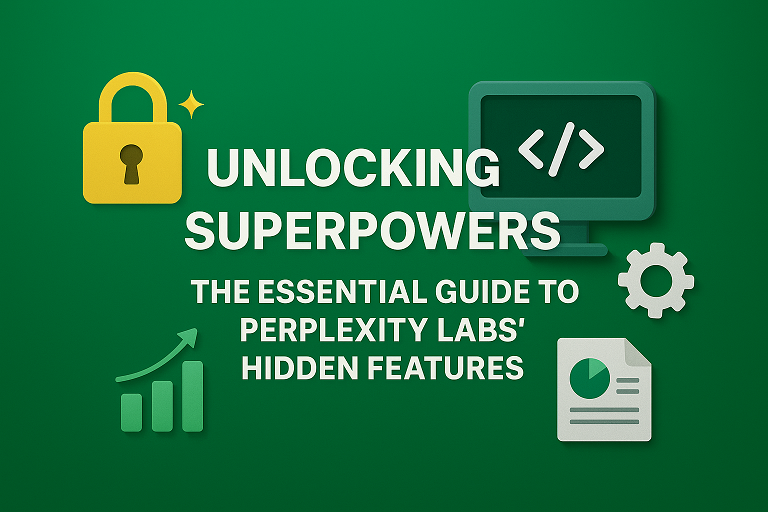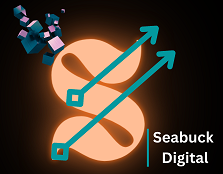
Introduction — Why Labs is a different breed
Tired of copy-pasting research into slides, spreadsheets, and code editors? Perplexity Labs is not just an upgraded search box — it’s an AI project workbench. Instead of one-off answers, Labs will perform multi-step projects for you: deep browsing, run code, generate charts, and spit out downloadable assets (CSV, code, images, slide-ready exports) — often working for many minutes to assemble everything.
Think of regular search as ordering a single item from a menu. Labs is like hiring a sous-chef, analyst, and designer for a single brief: you hand off the whole plate and they return a finished meal.
Part I — Unlocking the Superpowers (Hidden Perplexity Labs Features)
The Asset Tab: Your downloadable deliverables
This is where the magic becomes real. Labs collects everything it produces into an Assets pane: raw CSVs, cleaned data, generated charts and images, code files, and slide-like exports you can import into PowerPoint editors or slide tools. Those assets let you stop rebuilding the wheel — you can download a chart and paste it straight into a client deck.
What you actually get: CSVs, code, charts, PPT-like exports
Expect:
- Cleaned datasets (CSV) ready for Sheets.
- Code snippets or full scripts (Python/JS/HTML) to reproduce analyses.
- High-res charts and image assets to drop into slides.
- Presentation exports (many users convert these to PPTX using third-party tools).
How to pull assets into your workflow (Sheets, Git, slides)
Download CSV → Import to Google Sheets. Grab code → paste into a repo or run locally. Exported slide HTML → convert to PPTX with a small tool or screenshot for quick drafts. The point: assets hand you real files, not just text.
The App Tab: Mini-apps & dashboards in minutes
Ask Labs for an interactive dashboard and the Apps pane can render a small web app inside the Lab. Charts become interactive, tables support sort/filter, and you can explore data without leaving the browser — then download both the static assets and the code powering the app. If you want a live prototype for stakeholders, Labs can produce it faster than building from scratch.
When to ask for an App vs. a static report
If stakeholders need to poke around the data (filters, date ranges, segments), ask for an App. If they only need takeaways, a static report with downloadable charts is usually faster and cheaper (in Labs runs).
Agentic Workflow & Orchestration: Tell Labs the whole plan
This is the “agentic” part: define a multi-step brief and Labs will orchestrate research, analysis, charting, and export. For example: “Analyze market X, compile competitor profiles, create a 10-slide deck and a dashboard visualizing market share.” Labs will spawn subprocesses — research agents, analysis agents, code execution — to complete the brief. It’s automation at the project level, not only the sentence level.
Code execution (in-line Python/JS) and data cleaning
Need a CSV cleaned and a forecast run? Labs can write and run Python to clean, analyze, and output charts — then place the script and outputs in Assets. That’s why Labs is ideal for data-forward deliverables.
Export & Download: The tangible superpower (and why it matters)
The difference between “here’s an answer” and “here’s a deliverable you can hand off” is what makes Labs a productivity leap. Projects exit Labs as files you can share, re-run, or drop into workflow pipelines. This turns conceptual research into actionable outputs.
Part II — The Essential Guide: How to Use Perplexity Labs Like a Power User
The 3-Part Prompt Formula (Role + Goal + Output Specs)
Simple questions = simple results. For Labs, use a structured prompt:
- Role — who the assistant should act as (“Act as a market research analyst…”)
- Goal — what outcome you want (“Create a 10-slide competitor analysis with three takeaways…”)
- Output specs — formats and assets (“Include: CSV of scraped data, slide on slide 5 with market-share chart, and a small web dashboard.”)
A compact example:
Act as a market research analyst. Goal: Produce a 10-slide competitive analysis for electric bike startups in India. Output: (1) CSV of competitor metrics, (2) 10-slide HTML/PPT export, (3) dashboard app with market-share chart on tab 1. Source list required.
That level of specificity tells Labs to orchestrate and export — not just answer.
Practical prompt templates you can copy/paste
- Market analysis template (as above).
- Data-cleaning + dashboard template: “Act as data engineer; clean this CSV, produce summary metrics, build an interactive dashboard app and export cleaned CSV.”
- GTM deck template: “Act as product marketer; produce a 12-slide GTM deck with one slide showing TAM/SAM/SOM and a downloadable CSV of target accounts.”
Use uploads when you need exact input (see below).
The workflow walkthrough: Mode selector → Tasks → Assets → App
- Choose Labs mode in Perplexity.
- Enter your structured prompt and attach any files.
- Monitor the Tasks pane (Labs works through subtasks).
- Inspect Sources for provenance.
- Download Assets or open App to interact.
This procedural flow keeps you in control while Labs executes the heavy lifting.
Using file uploads and private data (best practices)
You can upload CSVs or docs for private analysis. Treat uploads like temporary private inputs: they are used to customize outputs, but do not upload sensitive client PII or passwords. If you must, use enterprise plans with contractual protections and always scrub direct identifiers.
(Help center docs clarify file usage and safety; see Privacy/Help pages for details.)
Part III — High-Value Use Cases (Project Walkthroughs)
Financial report analysis: From CSV to dashboard
- Prompt: “Act as a financial analyst; ingest attached Q1 ledger CSV, clean data, compute topline/margins, produce a 6-chart dashboard and a downloadable CSV of normalized KPIs.”
- Outcome: Clean CSV (asset), charts (assets), app (interactive dashboard), short slide export summarizing findings.
Building a prospect list + visualization for outreach
- Prompt: “Act as a growth analyst; scrape public data for X industry, create a scored prospect list (CSV), map prospects by region in a dashboard, and produce a 1-page outreach playbook.”
- Outcome: Useable outreach CSV, visualization for segmentation, and a ready-to-send playbook.
Generating a full Go-to-Market presentation + supporting dashboard
- Prompt: “Act as a GTM lead; analyze competitor pricing, build TAM slide, generate CTAs and a dashboard for pricing sensitivity.”
- Outcome: Slide export, pricing-model CSV, dashboard for stakeholder review.
These are the kinds of project outputs that transform Labs from a curiosity into a productivity multiplier.
Part IV — The Reality Check: Perplexity Labs Limitations You Must Know
Paywall & Plan differences (Pro / Max / Enterprise)
Labs is a Pro/paid feature (Perplexity Pro and above); there are plan tiers (Pro, Max, Enterprise) with varying quotas and capabilities. If you’re planning heavy use, check plan details — enterprise adds governance and higher quotas.
Labs quota & why you shouldn’t waste a run
Pro plans include a limited number of Labs runs per month (and follow-ups count). That means each Lab run is valuable: don’t run Labs on quick research questions — use Research mode instead. Check your usage meter and plan accordingly.
Security & privacy: shared assets can be permanent
A major hidden risk: shared Lab assets and public links may remain accessible and — in some settings — can’t be revoked simply by toggling a setting. Enterprise controls help, but never upload sensitive client data into a Lab you plan to share. Treat shared assets as potentially long-lived.
Hallucination risk (cascade failure)
Labs chains multiple steps. If an early step hallucinates (bad source extraction, wrong value), that error cascades into outputs (charts, CSVs, decks). Always verify source data, cross-check numbers, and treat automated outputs as first drafts.
Runtime & overkill: When to use Research instead
Labs often runs for many minutes to assemble work — that’s normal. Use Labs when you want a packaged deliverable; use Research mode for fast fact-finding or short clarifications.
Conclusion — Use Labs like a surgical tool, not a hammer
Perplexity Labs changes the game: it’s not just smarter search — it’s a project engine that produces files, apps, and prototypes you can actually use. To get the most out of it, prompt like a project manager (role + goal + outputs), protect sensitive data, and reserve runs for high-value tasks. When used strategically, Labs turns repetitive assembly work into a one-line brief and a download button.
FAQs
Q1: Is Labs available on the free Perplexity tier?
No — Labs is a Pro feature (or above). Check Perplexity’s pricing pages for the latest plan breakdown and quotas.
Q2: Can I convert Labs slide exports to .pptx directly?
Some Labs exports are HTML or image-based; many users convert them to PPTX using third-party tools or manual import. There isn’t always a single-button PPTX export.
Q3: How do I avoid wasting a Labs run?
Draft and test prompts in Research mode first. Only promote to Labs when you need downloadable assets, code execution, or an app. Use file uploads sparingly.
Q4: Are Labs assets private by default?
Assets stem from your Lab. You can share links, but be aware shared links may remain accessible. For sensitive data, prefer enterprise controls or avoid sharing.
Q5: What’s the best beginner prompt to try Labs?
“Act as a market research analyst. Goal: produce a 5-slide competitive snapshot of [industry], include a CSV of competitive metrics and a single interactive chart. Cite sources.” Keep it tight, then iterate.

